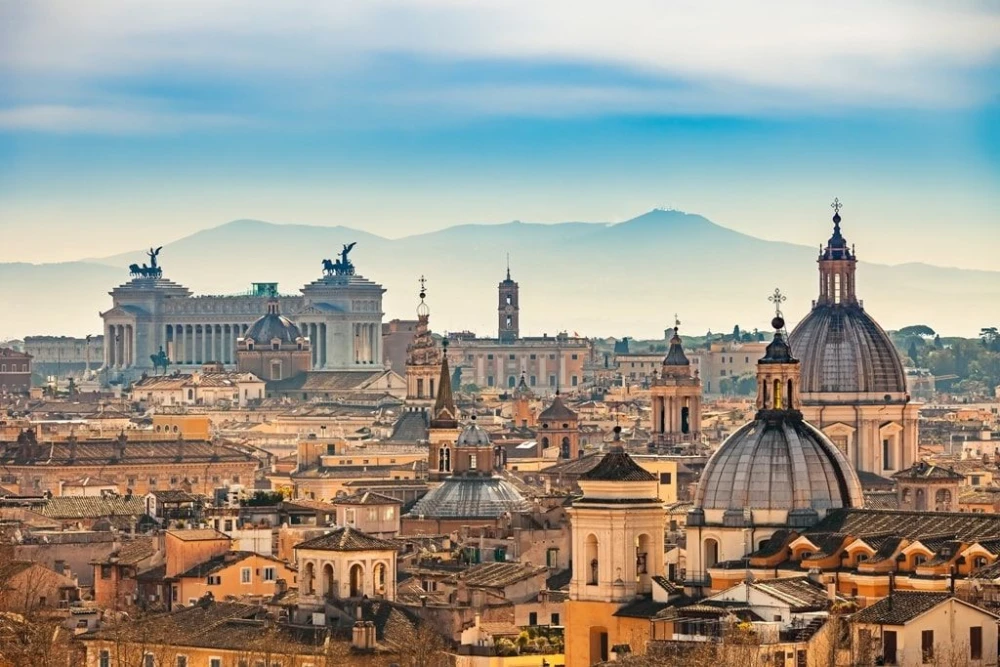15124, Maroysi, Athens, Greece
Naples, Civitavecchia (Rome), Genoa, Marseille (Provence), Barcelona, Valencia, Alicante, Lisbon, Funchal (Madeira), Antigua, Philipsburg, San Juan, Miami


Naples is the third-largest municipality in Italy, after Rome and Milan and one of the chief commercial cities of Europe. The city center has been designated a UNESCO World Heritage Site and the surrounding areas are dotted with cultural and historical treasures, with most notable, the restored ruins of Pompeii. Naples itself is mere enduring greatness. Highlights include Castel dell' Ovo, Castelnuovo, Castel Sant'Elmo, a medieval fortress located on a hilltop and national museums dedicated to art and archaeology. There is also a docile bay; the peaceful cypress-tufted islands of Ischia, Procida and Capri and over the city, Mount Vesuvius, volcano and national park. Take the opportunity to see the only active volcano on the European mainland, which blew in A.D. 79 and buried the city of Pompeii, or visit the magnificent Amalfi and Sorrento coasts.

Our gateway to the Eternal City, Civitavecchia has served as Rome's seaport since the 13th century, boasting a long and venerable history. Its location near the modern city, made it a perfect vacation resort for emperor Trajan, who built a pleasure villa. while Bernini and Michelangelo designed the harbor fortifications. Yet the Eternal City, the ancient capital of the Western World and the center of Christianity for nearly 2.000 years, is our main reason to be here. YYou can visit the ruins of the Forum and the Colosseum, throw a coin in Fontana di Trevi to make sure you return to Rome one day, take a photo in front of the Vatican, view the splendors of the Sistine Chapel or climb the Spanish Steps, once the heart of Rome's Bohemian Quarter and enjoy a delicious gelato, in the glamorous area.

Today we are visiting Genoa, the capital of the Province of Genoa and of the region of Liguria, a powerful commercial center seaport and city-state. It was the birthplace of the great adventurer Christopher Columbus and its maritime roots have fostered a dialect that has absorbed elements of Neapolitan, Calabrese and Portuguese over the centuries. Genoa's harbor is a bustling swarm of activity, hosting a museum and an aquarium and has a magnificent medieval flair, ideal for a nice stroll. This port is our launching point for the sprawling metropolis of Milan.

Marseille is the largest port on the Mediterranean, France's second largest city and a virtual melting pot of peoples and cultures. It is a unique city with a feel and culture all its own. It is also a place of striking contrasts, from the fishing boats of the picturesque Vieux Port to the modern Canebiere. Dominating the harbor is the infamous Chateau d'If, the rocky prison from which Alexandre Dumas' "Count of Monte Cristo" escaped. If you have time, explore the countryside around Arles and Avignon, immortalized in the canvases of Van Gogh, Cezanne, Matisse and Picasso, try the renowned bouillabaisse or tour the lovely towns and vineyards of Provence.

Barcelona is one of the world's greatest treasures, a global capital of commerce, fashion, culture and sunshine. Cruise visitors should start with a walk down Las Ramblas, the glorious tree-shaded thoroughfare at the heart of the city, enjoy a dive in the wonderful beaches nearby, but, most of all, see what visionary architect Antoni Gaudi wrought. Seven of his creations have been honored as UNESCO World Heritage Sites, including La Sagrada Familia, the Park Guell and Casa Mila. Time provided, you can also visit the former Olympic Ring on the hill of Montjuic, home to world-class parks, fountains and museums. Barcelona, which nurtured such artistic giants as Picasso, Dali, Miro and Casals, is definitely a traveler's paradise.
Since its founding as a Roman colony in 138 B.C., the Visigoths, the Moors, the Catalan and Aragonese and the modern tomato-throwers have thrived on the shores of the Mediterranean at the Gulf of Valencia. Valencia is a mix of the old and the new. The historic past is depicted in the stone geometry of the Valencia Cathedral, the mediaeval gates of the Serrano and Quart towers, or the Tribunal de las Aguas (Water Court) and one of the most iconic examples of Gothic architecture in Europe, the Lonja de la Seda, declared an Intangible Cultural Heritage site by UNESCO. The new facet is embodied in the arching white steel of the futuristic City of Arts and Sciences, designed by Valencian architect Santiago Calatrava.
Alicante is one of the most popular and famous destinations on Costa Blanca, the 200 kilometres of Mediterranean coastline which attracts thousants of sun and fun lovers. Stroll among the palms, shops and cafés of the beachfront Explanada de España, explore the high-baroque Cathedral de San Nicolas de Bari, the Basilica of Santa María, the Baroque Casa de La Asegurada (1685), Gravina Palace (1748–1808), nowadays hosting Gravina Museum of Fine Arts, or the Castillo of Santa Barbara, a 16th-century castle with splendid views of Costa Blanca.
Lisbon, the capital of Portugal, on the southwest of the country, has been the main gateway for the rest of the planet for more than 19 centuries. Ships captained by Portuguese explorers like Bartolomeu Dias, Vasco da Gama and Ferdinand Magellan, skittered across the globe, hauling treasure home and making Lisbon a global capital. Draped across seven hills, Lisbon was once the center of a vast maritime empire that stretched from the west coast of Africa to the Spice Islands of the East Indies, until 1755, when a violent earthquake destroyed two-thirds of the city, leaving intact only the Alfama, the old Moorish quarter. Today, Lisbon is a stately city of Neoclassical buildings and wide plazas. Eternally linked to the sea, Lisbon's magnificent harbor is spanned by the longest suspension bridge in Europe. Among the city's landmarks are the iconic Castelo de São Jorge, the World Heritage Sites of Belém Tower and Jerónimos Monastery, both built in Lisbon's native Manueline architectural style.
Madeira is located in the north Atlantic Ocean, 520 km from the African coast and 1.000 km from the European continent. Today, it is a popular year-round resort, noted for its wine, flowers, landscapes and embroidery artisans. Madeira's capital Funchal, on the island's south coast, rises straight up from the sea and enchants visitors, with its red roofs and hibiscus easing gently down the lower slopes of Pico do Arieiro to the ocean. Time given, take the cable car toMonte Palace, in a 15-minute ride up and over the old town of Funchal and the Ribeira de Joao Gomes valley. When in town, wander along the Old centre, with its port and promenade, quaint and narrow winding streets, shops, cafés, bars and restaurants and view "Worker's Market", the 15th-century cathedral, the Theatre, the Town Hall and the waterfront.
Antigua is a Caribbean paradise part of the Lesser Antilles, with 365 amazing sun-drenched beaches and lush rainforests. Explore the capital city of St. John’s and marvel the baroque twin towers of St. John’s Cathedral, visit the Museum of Antigua and Barbuda and see Arawak and colonial antiquities. In the rainforest canopy you can watch rarely- seen species and in nearby Barbuda some of the region's most significant bird sanctuaries. For those looking for high-adrenaline tours, take a helicopter flight to nearby Montserrat volcanic island.
Philipsburg is the capital of the Dutch section of the island Saint Maarten, which, geographically 60% percent French and 40% Dutch.
This Caribbean gem lies between clear Caribbean Sea and the Great Salt Pond, on a gentle arc of land with a saltwater lake to the north and a bay to the south. There is an esplanade running alongside a white sand beach, giving you the opportunity to choose either shopping or sunning. You can do exciting shopping at the duty-free boutiques of Front Street, one of the great shopping avenues of the Caribbean and search the quaint clothes boutiques or browse for duty-free bargains. Outside town, you can choose from one of the island's nearly 40 beaches, such as Mullet Bay, which is one of the nicest.
-large.webp)
Itinerary







